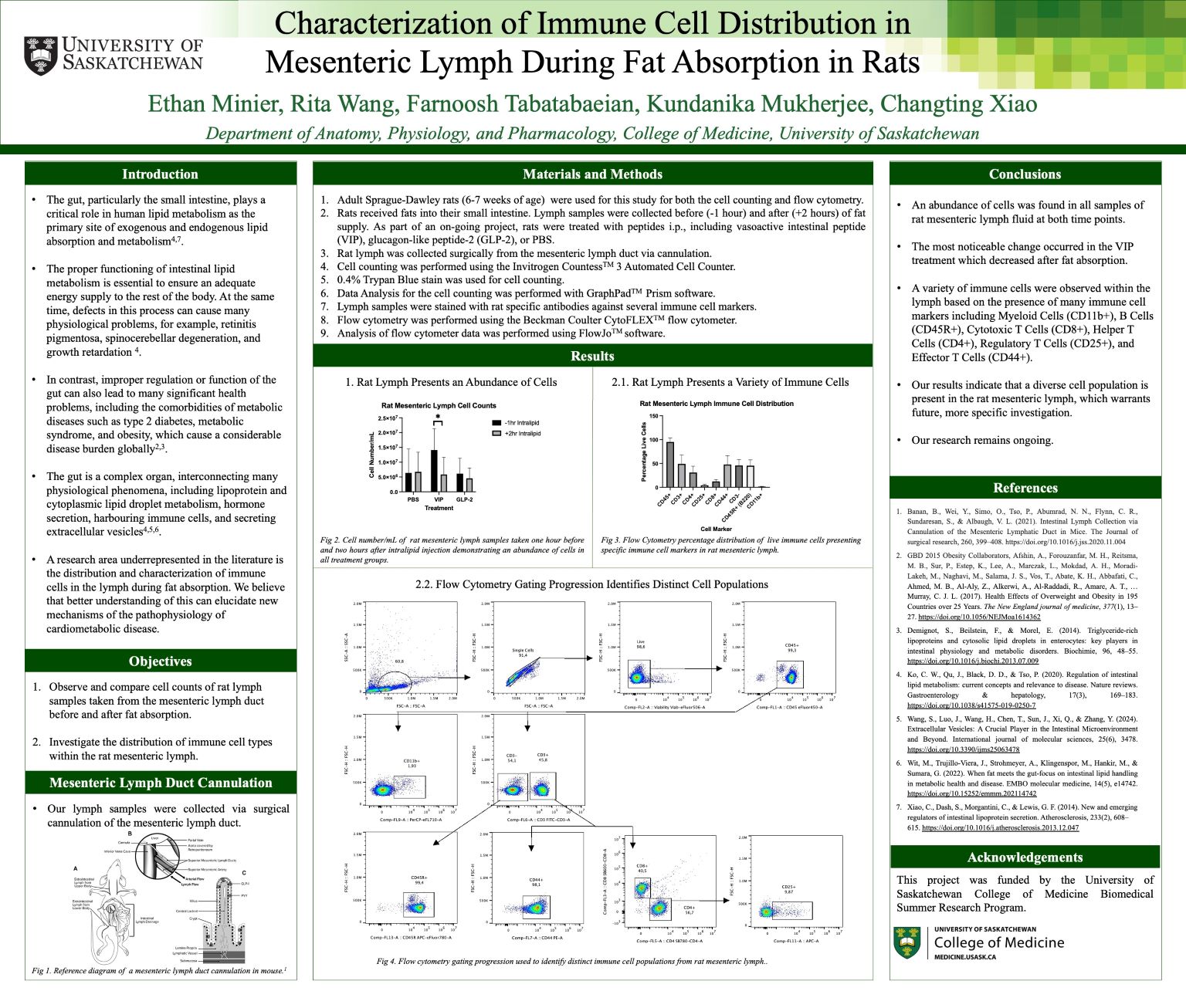
Characterization of immune cell distribution in mesenteric lymph during fat absorption in rats
Ethan Minier
Dysregulated gut functions, including lipid handling, are associated with metabolic diseases, including type-2 diabetes and obesity. Various biological factors are present during dietary fat absorption and lipoprotein secretion in the gut; however, very little has been studied regarding their amounts, identities and implications in lipid metabolism and disease development. This project aimed to quantify and characterize these live cells
Sprague-Dawley rats were surgically implanted with catheters into the mesenteric lymph duct (for collecting lymph fluid), the duodenum (for providing fats), and the peritoneum (for giving drug treatments). Total cells in rat lymph samples collected before and after providing fats into the duodenum were counted. An abundance of cells was observed. We next analyzed the quantity and subtypes of immune cells in the lymph fluid collected. Lymph samples were incubated with rat-specific antibodies against several immune cell markers and analyzed using flow cytometry. A wide variety of immune cells was observed.
These results indicate that live cells, including multiple subtypes of immune cells, are present in the mesenteric lymph during fat absorption. Future research is warranted to investigate the functional roles of such cells as they relate to lipid handling in the gut and systemic health in healthy and disease conditions.
